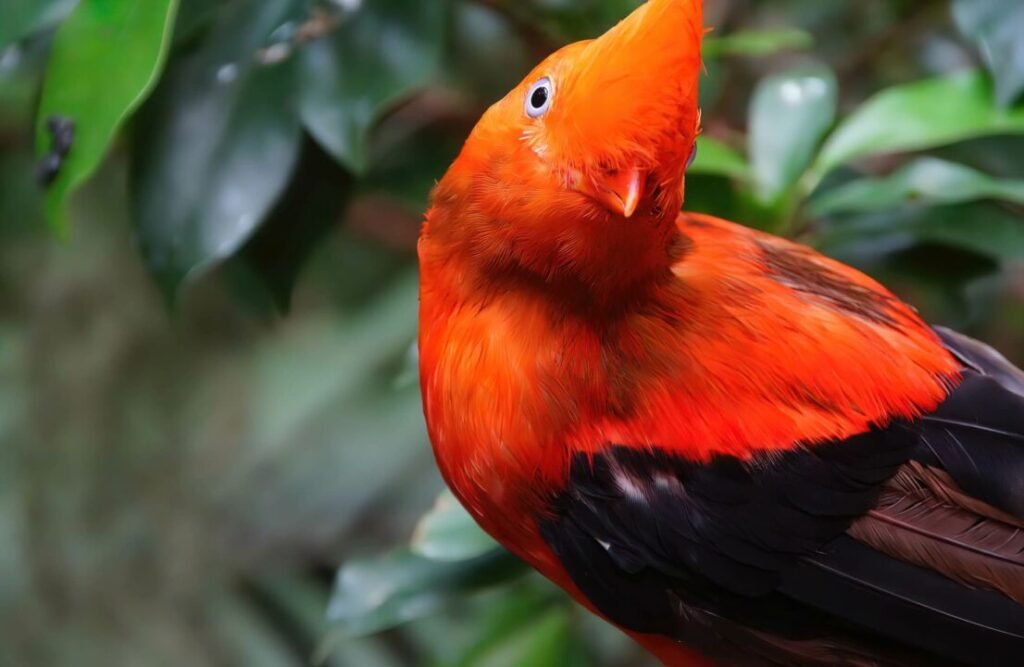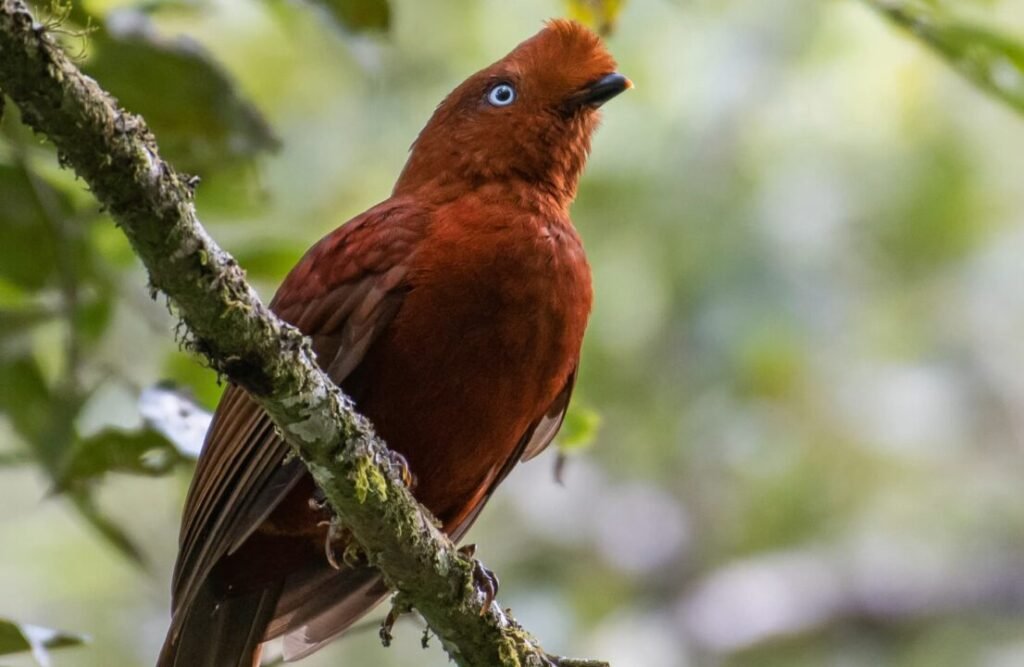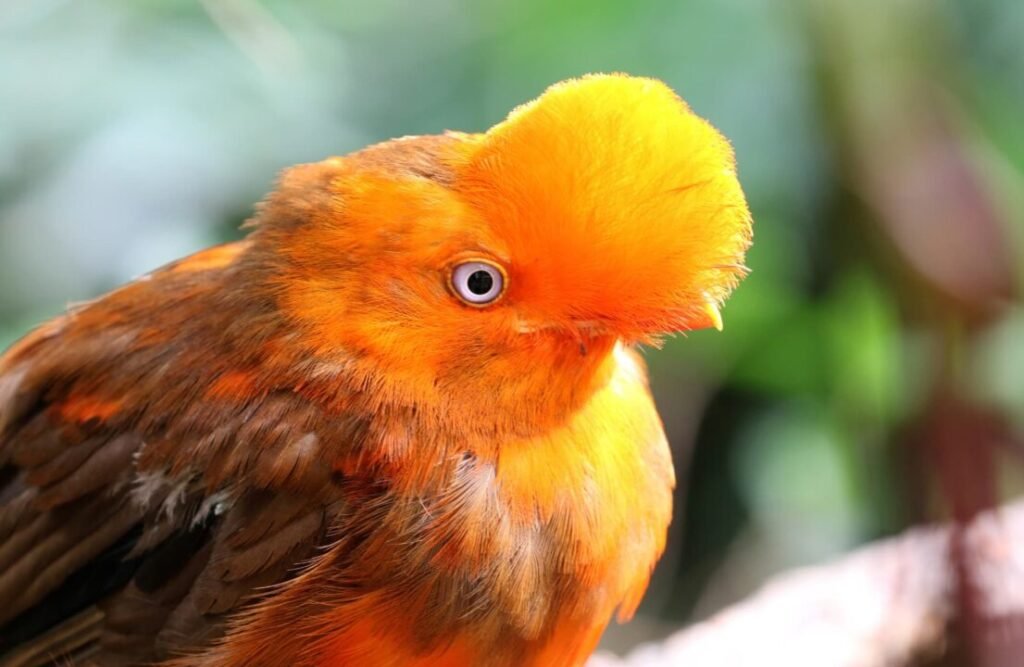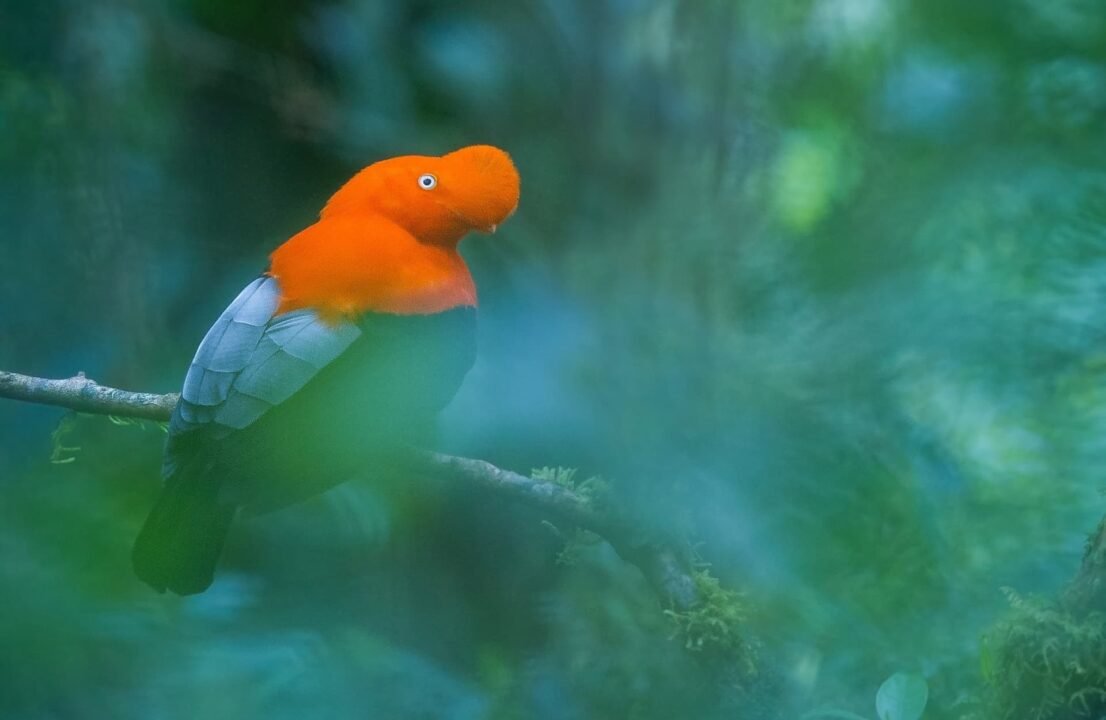The male Andean Cock of the rocks is easily recognizable due to its vibrant red-orange feathers, contrasting black-and-white wings, and a prominent fan-shaped crest that covers most of its bill.
Referred to as tunki in Quechua, this bird holds the title of Peru’s national bird and shares characteristics with other notable tropical fruit-eating birds like the Banded Cotinga, Long-wattled Umbrellabird, and Bearded Bellbird.
Cock of what?
The designation “cock” for this bird likely originates from its resemblance to a rooster, as perceived by early observers. Additionally, the bird’s bold and confident demeanor could contribute to this moniker.
Its preference for rocky habitats near forest streams explains the “rock” part of its name.

The genus name, Rupicola, stems from Latin words indicating its affinity for rocky environments, reflecting its nesting habits.
Found in Andean subtropical and cloud forests spanning from Venezuela to Bolivia, this species comprises four recognized subspecies.
Despite the striking appearance of the males, they are often heard rather than seen, emitting peculiar, raspy clanks and croaks during mating displays or in flight.
Intricate Presentation
In addition to its unique appearance, the Andean Cock of the rocks is renowned for its intricate mating rituals. Similar to the behaviors of Greater Sage-Grouse and Greater Prairie-Chickens, males congregate at communal sites known as leks, where they showcase their vibrant plumage and impressive maneuvers.
Once assembled, competing males engage in simulated confrontational displays, often arranged in pairs or small groups. These displays involve a range of actions including bowing, wing-flapping, head-bobbing, bill-snapping, and emitting peculiar squeaks and grunts. Their intensity escalates as they vigorously strive to impress the rufous-brown females who arrive to evaluate their performances.

After selecting a mate among the displaying males, a female cock of the rocks departs from the lek and assumes solitary responsibilities for nest construction and rearing offspring.
Staying true to her name, she constructs her nest using a mixture of mud and plant material, typically positioning it at an elevation of 10 to 40 feet above the ground on a cliff, sizable boulder, or sometimes within a cave, resembling the nesting habits of an Oilbird.
Fruit-Eating Forager
Similar to various tropical avian species like the Keel-billed Toucan and Hooded Berryeater, the Andean Cock-of-the-rock primarily sustains itself on a diet of fruit, occasionally supplemented with insects and small vertebrates.
Inedible seeds and pits are processed through their digestive systems, rendering these cotingas crucial agents in seed dispersal, thereby contributing significantly to the preservation and richness of tropical forest ecosystems.
Cock-of-the-rock Conservation
Despite being in decline, the Andean Cock-of-the-rock maintains a wide distribution and is not currently classified as being in imminent danger. Nevertheless, it remains at risk due to habitat degradation.
In Peru, the Andean Cock-of-the-rock is found in protected areas such as the national parks of Río Abiseo in San Martín, Yanachaga-Chemillén in Pasco, Tingo María in Huánuco, and Manu in Cusco–Madre de Dios. It also inhabits protected forests like Alto Mayo in San Martín, San Matías-San Carlos in Pasco, and Pui-Pui in Junín.

Each one can cost over $5,000 on the black market. “It is necessary for regional governments and executive agencies involved in bird protection to coordinate actions to save the cock-of-the-rock from the danger of extinction,” they emphasize.
Currently, it is estimated that there are around 3,000 specimens, so national-scale protection is urgently needed.
These birds are significant seed dispersers in the jungle, which contributes to forest preservation. In this way, they aid in the natural regeneration of their environment.
Contact us if you wish to arrange a trip to see these species in Peru!

